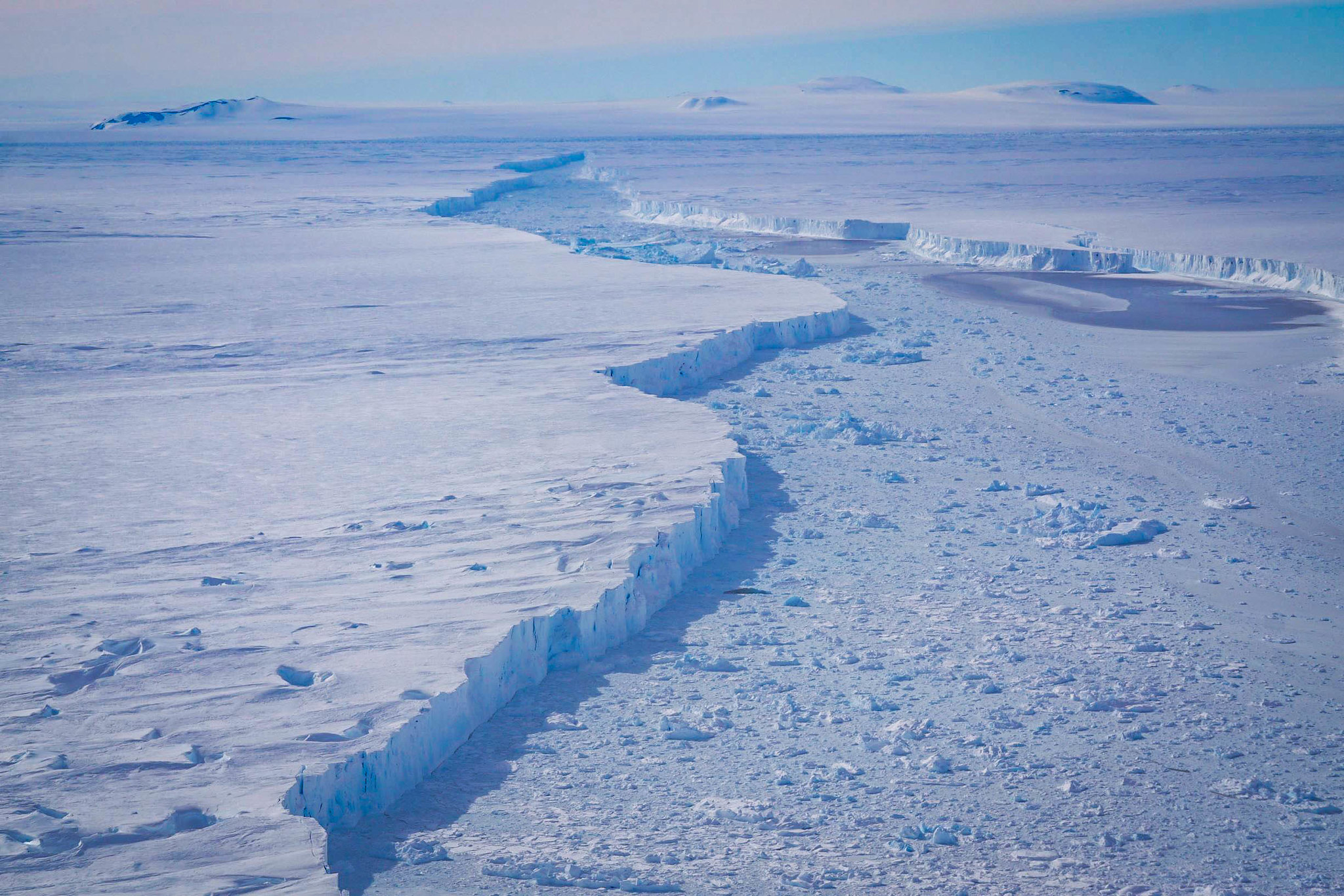Excerpt:
Miles of seawater are flowing under Thwaites Glacier, undermining an Antarctic ice sheet and threatening rapid sea level rise.
At the bottom of the Earth sits a massive bowl of ice you may know as the West Antarctic ice sheet. Each day, the ocean laps away at its base, slowly eroding the glaciers that line its rim. When they inevitably give in, the sea will begin to fill the basin, claiming the ice for its own and flooding coastlines around the world.
Thwaites Glacier is one of the bulwarks guarding against the collapse of this critical ice sheet, most of which rests below sea level and holds enough ice to raise the ocean by 60 meters, or about 195 feet. Unfortunately, this frosty Goliath, the size of Florida, is also one of the world’s most unstable and fastest-melting glaciers. While glaciologists knew its rate of ice loss was dire, they recently discovered that it’s exposed to far more warming water than previously believed. In a study published this week, scientists using satellite imagery and hydraulic modeling found that warming tidal currents are permeating the massive block of ice at depths as great as 3.7 miles, causing “vigorous melting.”
“We really, really need to understand how fast the ice is changing,” said Christine Dow, an associate professor of glaciology at the University of Waterloo and one of the study’s authors. “We were hoping it would take a hundred, 500 years to lose that ice.” Although the researchers do not know how much faster the ice is melting, they worry it could be gone within a few decades.
As climate change drives global temperatures ever higher, glaciers and ice sheets in polar and mountainous regions inevitably melt. The water and dislodged ice flows into the oceans, causing them to rise. Since 1880, global sea levels have climbed roughly 9 inches, and any sudden increase could be catastrophic for coastal cities like New York, Mumbai, and Shanghai. Low-lying countries like the Marshall Islands and Tuvalu could be submerged entirely.
Thwaites Glacier, often dubbed the “Doomsday Glacier,” already accounts for 4 percent of the planet’s sea level rise and loses 50 billion tons of ice annually. When it collapses, it could raise oceans worldwide by 65 centimeters, or just over 2 feet. “It doesn’t sound like a lot, but if you think of how much ocean water we have in the world, that’s a huge volume,” said Dow…









